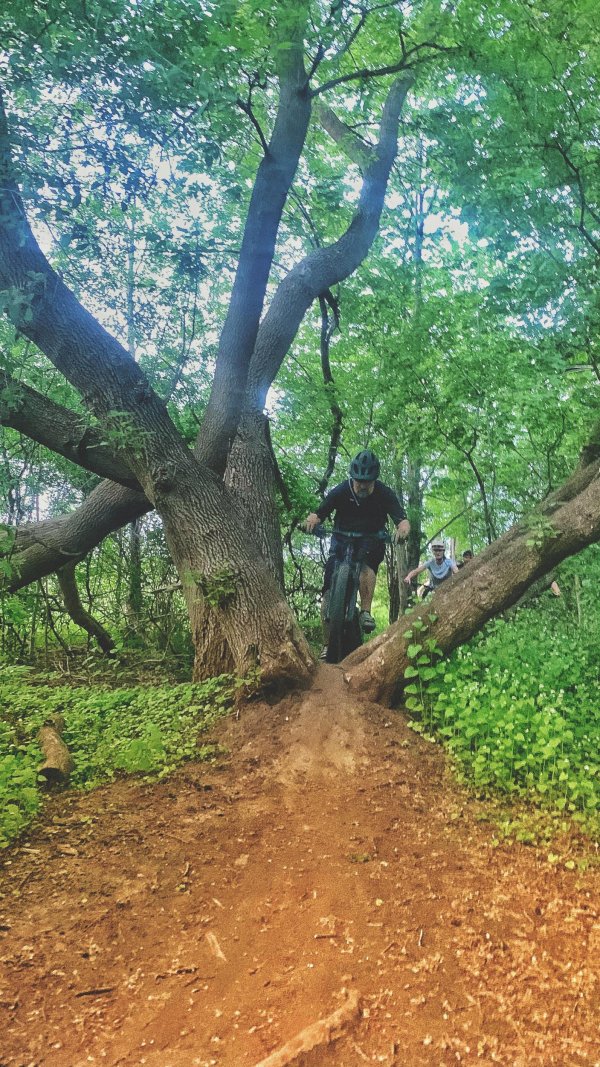The diagram is missing something- what happens when you hit a bump. At that point some of the forward speed is converted to vertical motion. Its less efficient. By running a lower pressure you can have a more efficient ride- if the pressure is right it will be faster and smoother at the same time.Cycling Furces
There seems to be a basic ,isunderstanding of the role of tire width and pressure. Despite posting a video showing skinny tires inflated to high pressure are faster than fatter tires with lower pressure some are still uconviced. I concede that for the every ider these differences might be negligible. Other factors may prevail. Nevertheless, all things being equal a thinner tire inflated to a higher pressure will be faster than the fatter tir tire with lower pressure. AS the video above suggests, results were probably skewed by the tires operating out of their r pressure range.
Cycling Forces | Physical Cycling
View attachment 92986
By going with a wider tire (as long as its not too wide) your contact patch is reduced in size due to the aspect ratio being different- a narrower tire has a long contact patch while a wider tire trades that for one that is wider- but less area overall. This give you a bit more flexibility with the tire pressures you can run since you have a greater volume of air. You can try to get around that by greater inflation of the narrower tire, but then the bumps make the ride less efficient, and certainly less comfortable, robbing you of energy. The downside of wider tires isn't speed on flat ground- in that regard as long as TPI and tread issues are similar they are faster, but not uphill, simply on account of the greater weight.
YT has a ton of videos on this topic!
This is one of those cycling traditions which takes decades of time to overcome, similar to the idea of drop bars for people that aren't racing.
For the Tour Divide I moved away from the Jones CRims to a set of Hunt rims with internal wall to wall width of 33mm and tire width of 2.6". This reduced weight a bit since the Hunt rims even though alloy are lighter than the Jones CRims and for that matter so are the tires (Vitorria Mezcals). On the Tour Divide, the most successful racers say that 2.2 to 2.3" widths seem to be the sweet spot- narrower and you can't make speed over the rougher stuff, wider and its too heavy. But most of those guys weigh 30-50 pounds less than me so the wider tire seems prudent. In 2019 I rode 2.8" Vee Rubber Speedsters and made the best speed on the route of any of my prior attempts (two of those using 2.2" tires). Over days and weeks of continuous riding, the comfort aspect becomes paramount; the Jones is easily the most comfortable bike I've owned despite no suspension. I think the longer wheelbase is playing a role.Another guy riding a Jones… excellent! Sadly my custom Cyfac Absolu hangs in the garage. The widest I can get on that is 25mm, and I also don’t bend into race bike positioning as I once did (I’m 64). So I ride my Jones. I ditched the Eagle group and went to Shimano di2. And I’m running Rene Herse (Compass tires) 29x44. The pic shows my Jones rims with 55mm tires. (I have another wheelset for the 44s) At around 20psi no need for suspension, plenty if comfort. And unless you are riding up at speeds where air resistance is becoming the primary factor (lets say above 18 mph) tire width isn’t a factor. somebody above linked to the Rene Herse site to advocate for wider is as fast as skinny given a supple tire, and I say if you like riding skinny and beating the hell out of yourself, go for it. if your frame will allow try a 32 and drop the pressure, see how much better your shoulders, hands, and neck feel after a long ride. Then check and you’ll notice no drop in time compared to your prior rides. But, supple tire is essential. A stiff sidewall wide tire will be slower.
View attachment 92980




